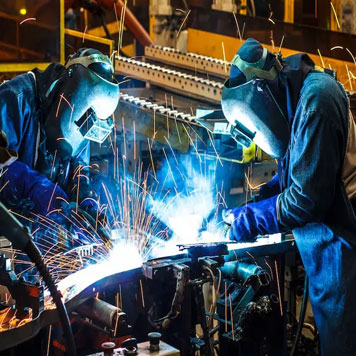In today’s competitive industrial landscape, precision, speed, and efficiency are key to staying ahead. Laser cutting and welding technologies have revolutionized manufacturing processes, enabling industries to achieve exceptional accuracy, minimal waste, and high production rates. From automotive and aerospace to electronics and medical devices, these laser-based processes are now at the heart of modern manufacturing.
1. What is Laser Cutting?
Laser welding uses a concentrated beam of light to fuse materials together. It is especially useful for joining metals and thermoplastics, offering strong, clean welds without the need for additional filler material in many cases.
Advantages of laser welding:
- Deep penetration & high strength: Ensures durable joints.
- Minimal distortion: Low heat-affected zones reduce warping.
- Precision in micro-welding: Perfect for electronics and medical devices.
- High-speed joining: Increases throughput in mass production.

2. What is Laser Welding?
Laser welding uses a concentrated beam of light to fuse materials together. It is especially useful for joining metals and thermoplastics, offering strong, clean welds without the need for additional filler material in many cases.
Advantages of laser welding:
- Deep penetration & high strength: Ensures durable joints.
- Minimal distortion: Low heat-affected zones reduce warping.
- Precision in micro-welding: Perfect for electronics and medical devices.
- High-speed joining: Increases throughput in mass production.
3. Applications in Manufacturing
Laser cutting and welding have found applications across multiple industries:
- Automotive: Cutting body panels, welding engine components, and battery assemblies for electric vehicles.
- Aerospace: Fabricating lightweight yet strong structures with precision.
- Electronics: Micro-cutting and micro-welding for circuit boards and sensors.
- Medical Devices: Creating intricate surgical instruments and implants.
- Metal Fabrication: Producing custom parts for industrial machinery.
4. Why Manufacturers Prefer Laser Technology
Compared to traditional methods, laser cutting and welding offer:
- Greater accuracy and repeatability.
- Reduced production costs through minimal material loss.
- Flexibility in handling both small-batch and high-volume production.
- Environmentally friendly processes due to reduced waste and energy efficiency.
5. The Future of Laser Cutting & Welding
With advancements in fiber lasers, automation, and AI-driven quality control, laser cutting and welding are expected to become even more precise, faster, and more sustainable. Integration with robotics and smart manufacturing systems will further enhance efficiency, making these technologies indispensable in Industry 4.0.
Conclusion:
Laser cutting and welding have transformed the way products are designed and manufactured. Their ability to deliver precision, speed, and cost efficiency makes them an essential part of modern manufacturing—and a technology that will continue shaping the industry for years to come.
